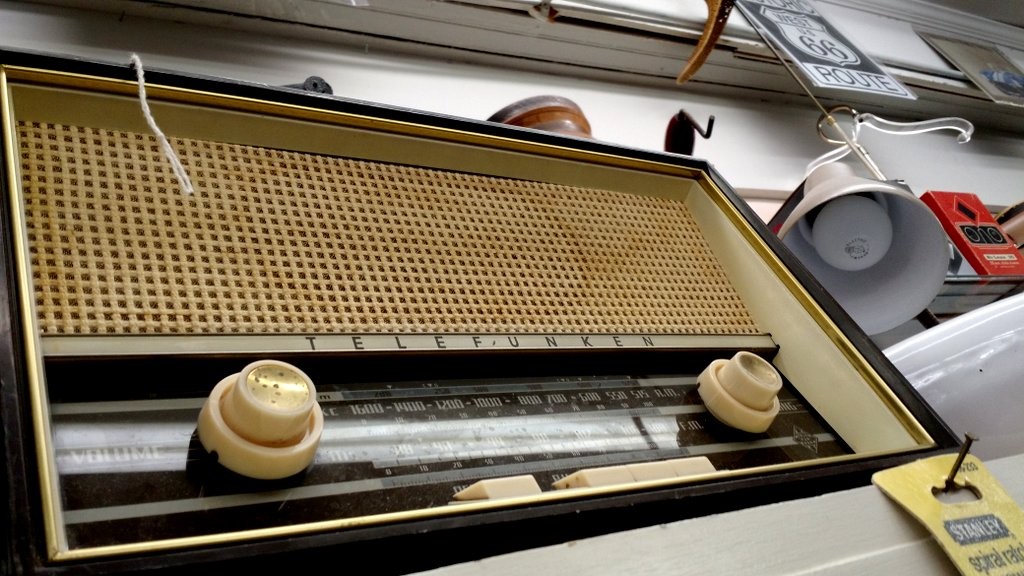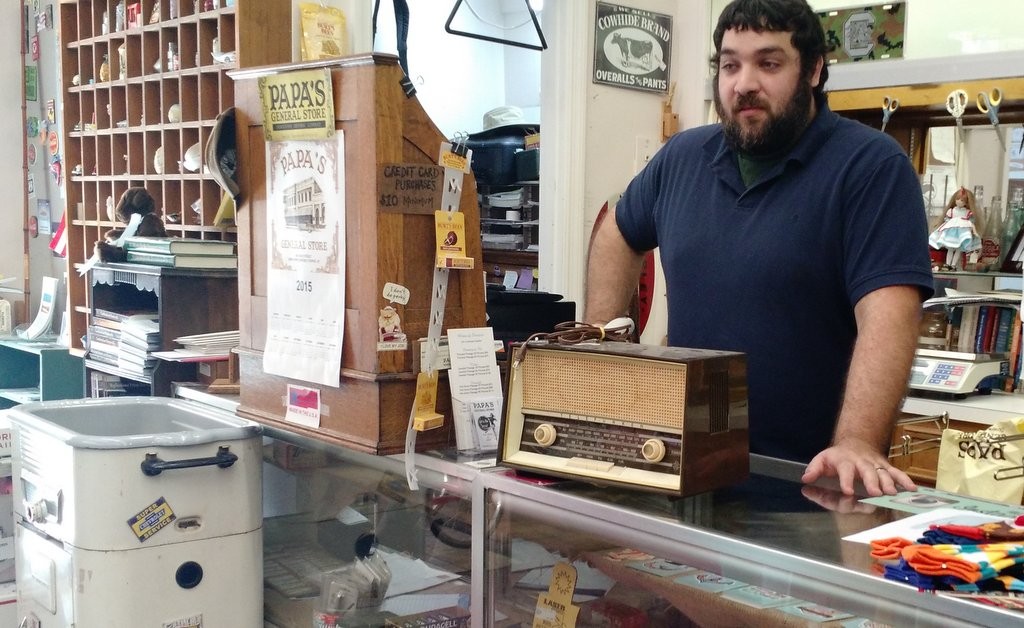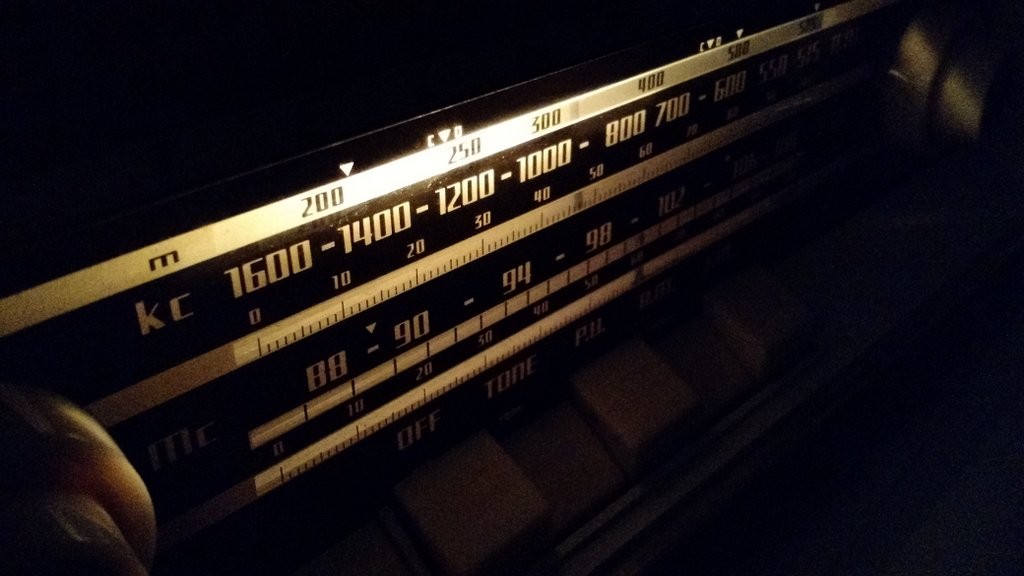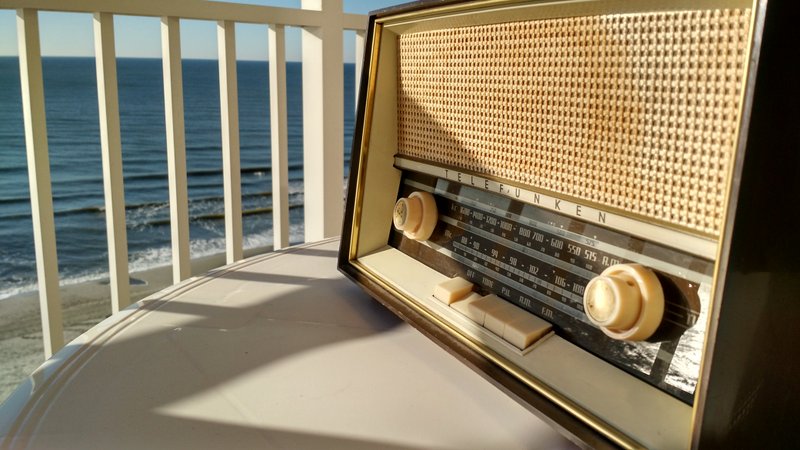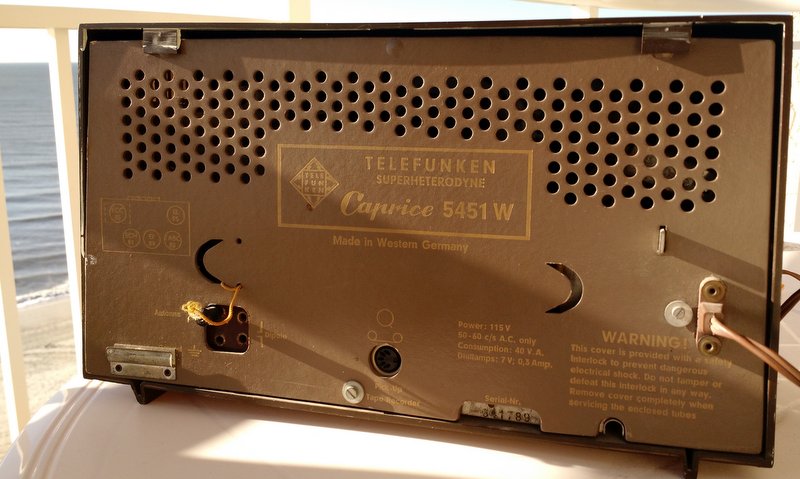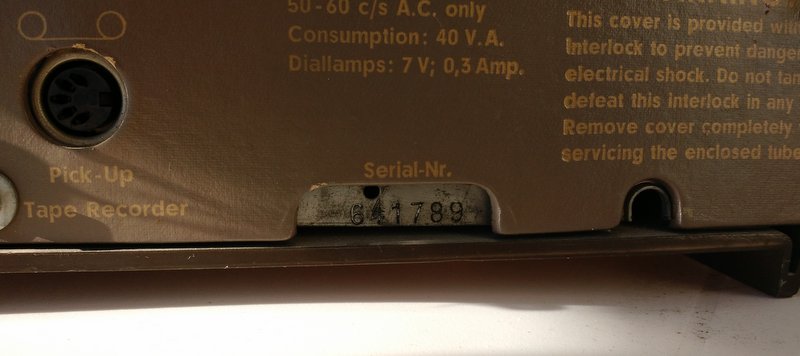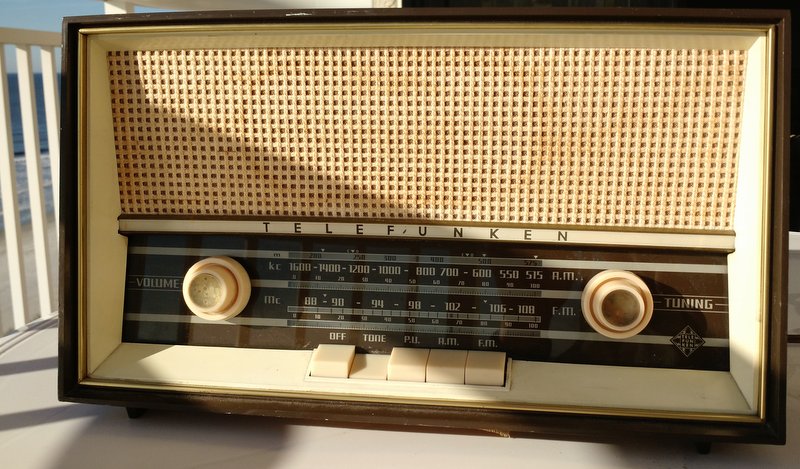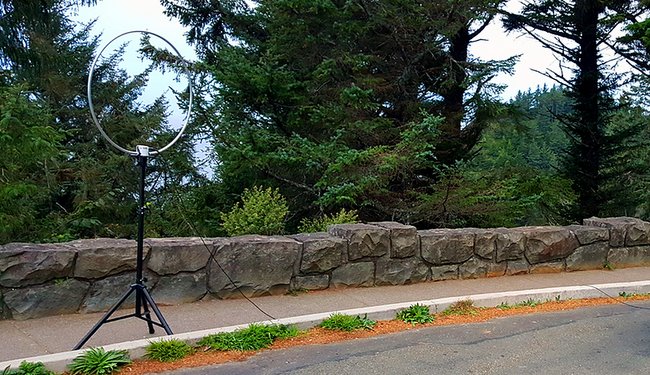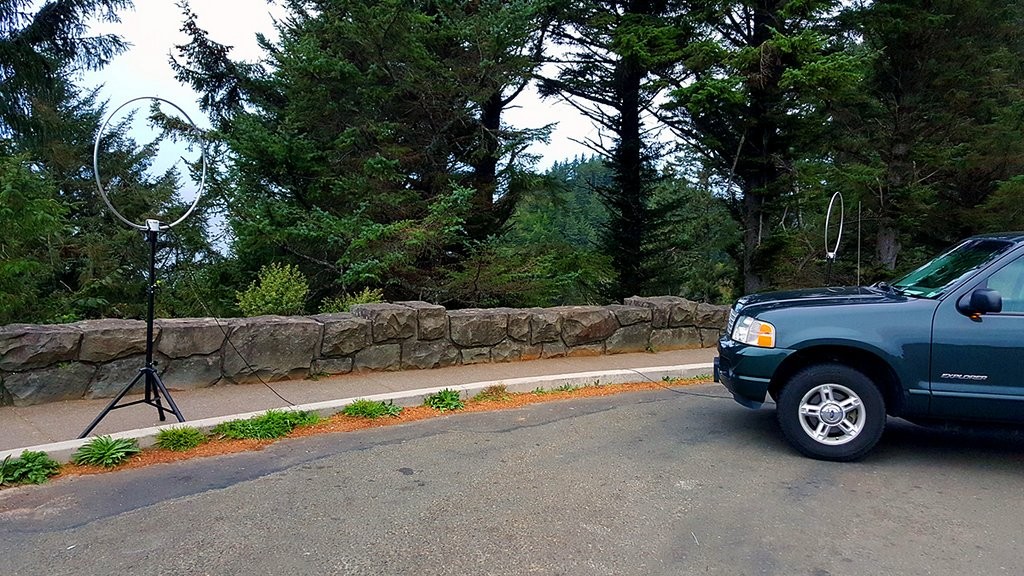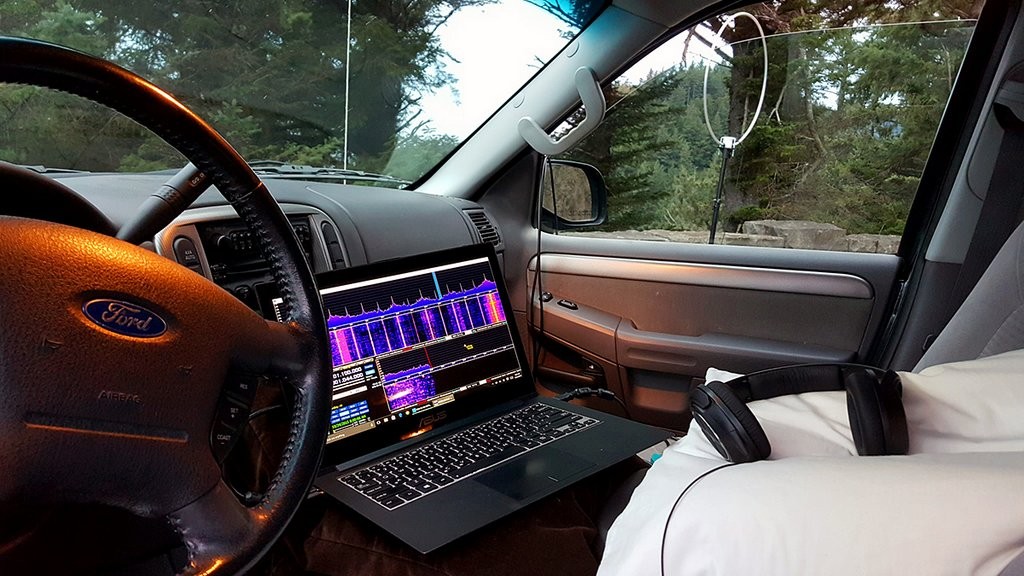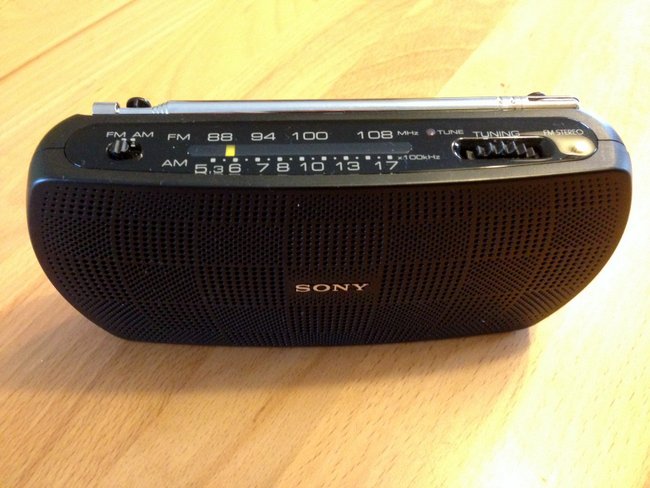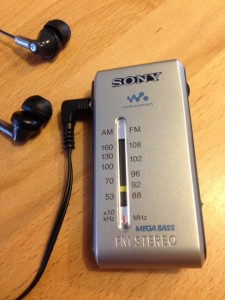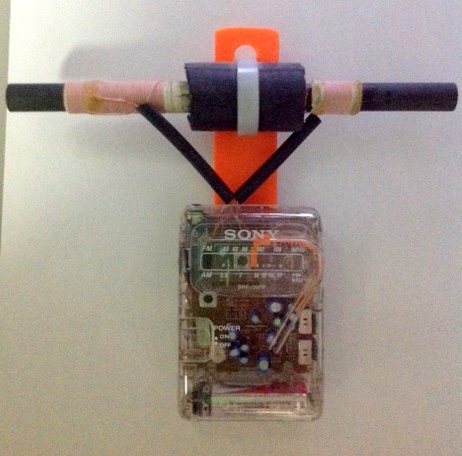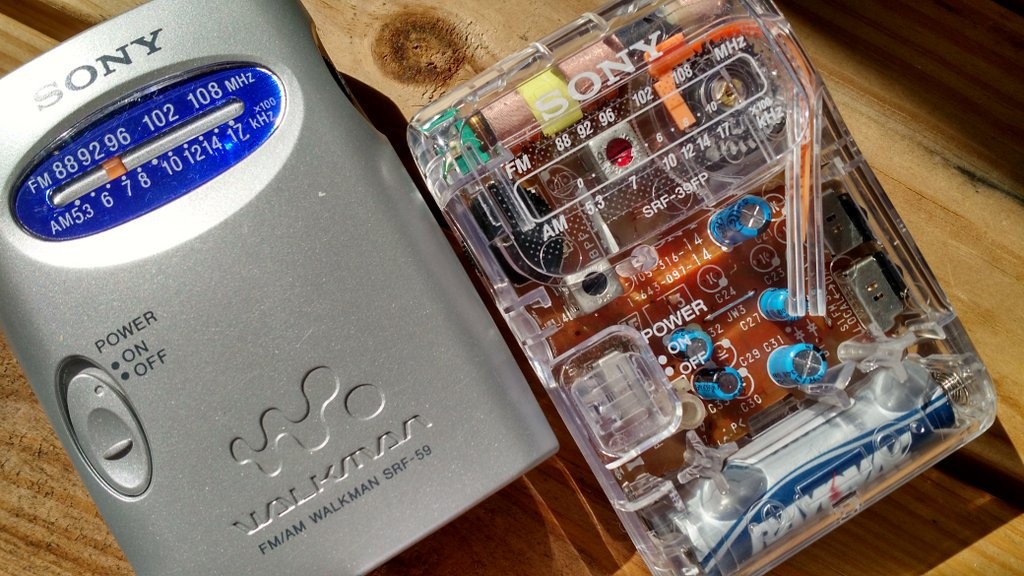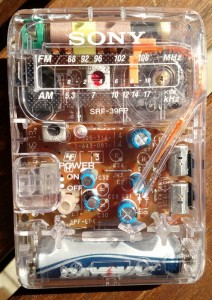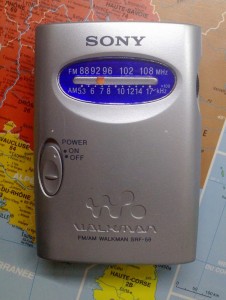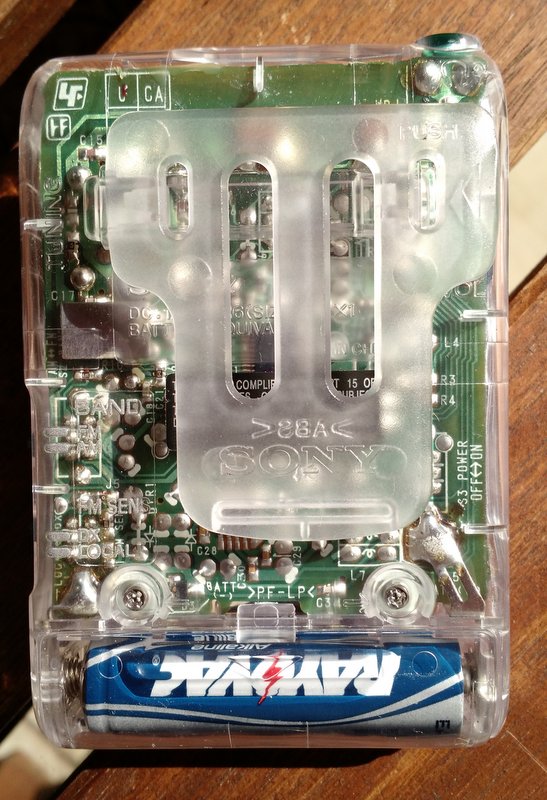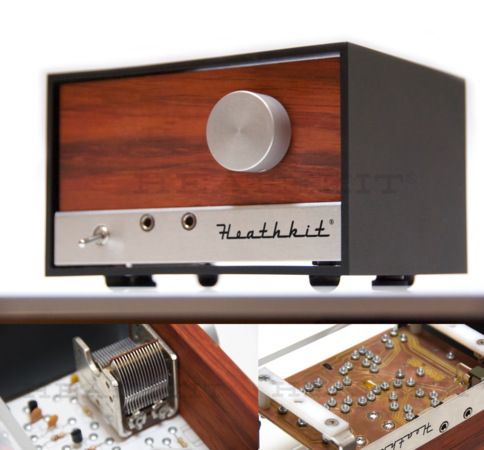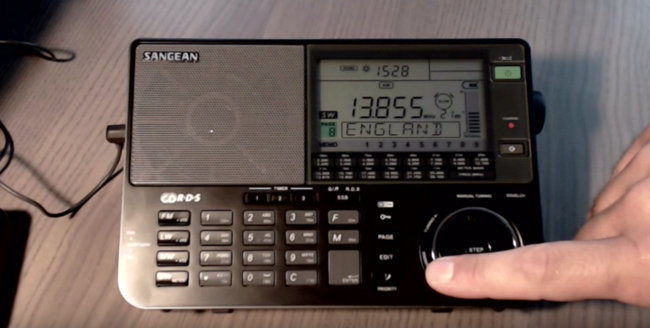I’ve been traveling along the coast of South Carolina this week, and on Thursday, I found myself in the historic town of Conway, South Carolina. I parked downtown and strolled into the past via Papa’s General Store, a small local store with a lot of merchandise––and a lot of charm.
While browsing a display of antiques, I happened to notice a vintage radio perched on a high shelf. Here’s what caught my eye:
I asked, was the radio was for sale? And, indeed, it was. One of the sales clerks pulled it from the shelf, dusted off the top, and read the price: $74. I noted that it was a West German Telefunken receiver. I asked the clerk, Chris, if it worked, and he confirmed that it did; it belonged to his uncle, who had clearly taken very good care of it.
Chris allowed me to plug it in, turn it on, and tune in a couple of local stations…The Telefunken produced beautiful audio without even the slightest hint of a hum. Chris was pleased that I appreciated the radio, and sincerely wanted me to take it home, so he lowered the price a bit further. I agreed, and purchased it without hesitation. Just couldn’t help it…
The Telefunken Superheterodyn Caprice 5451W covers the AM/mediumwave band and FM. It’s a tube radio produced in the early 1960s in West Germany, and is now the only tube-based radio I own that covers the FM band.
Of course, I was very eager to get the Telefunken on the air, so that afternoon I headed to our balcony overlooking the Atlantic, tuned around a bit on the mediumwave band…and was simply amazed at all it could receive. I picked up my smart phone, and with it made a very short recording of the Cuban station, Radio Reloj, on 820 kHz:
My smart phone’s microphone doesn’t begin to do the Telefunken’s rich audio justice, but you can clearly hear Radio Reloj’s ticks and “RR” in Morse Code at the top of the minute (indeed, if you’re listening with headphones, you may also hear crashing waves in the background). Something nearby generated a lot of RFI right on frequency, too , but the rest of the broadcast band had a surprisingly low noise floor.
I also spent some time with the Telefunken on the FM broadcast band; with a simple wire antenna, this worked wonders.
In my humble op, the audio the Telefunken produces is simply beautiful. And so, I’ve got to add, is this vintage radio. See for yourself.


